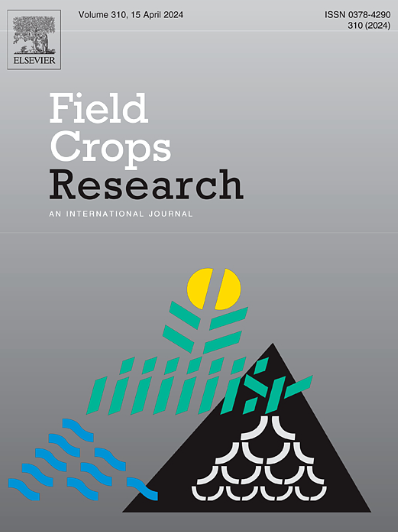韩国稻田施用硅酸盐肥对减少CH4排放和提高生产力的贡献
IF 5.6
1区 农林科学
Q1 AGRONOMY
引用次数: 0
摘要
铁生产过程的副产品铁渣硅酸盐肥料在韩国和日本的稻田中作为土壤改良剂已经使用了50多年。众所周知,施用硅酸盐肥可提高水稻产量并减少甲烷(CH4)排放。在韩国,从1990年到2020年,稻田的CH4排放量下降了约50% %,这可能是由于种植面积的减少。在估算全国稻田CH4通量清单时,考虑了排放因子(即EFbaseline x ef有机质x EFwater状态)和活动数据(即面积和耕种期)。但未考虑施用硅酸肥对CH4通量的影响。本文章由计算机程序翻译,如有差异,请以英文原文为准。
Contribution of silicate fertilizer application to reducing CH4 emission and increasing productivity in Korean rice paddies
Context
Iron slag-based silicate fertilizer, a byproduct of the iron production process, has been applied as a soil amendment in Korean and Japanese rice paddies for over 50 years. Silicate fertilizer application is known to improve rice productivity and decrease methane (CH4) emissions. In Korea, CH4 emissions from rice paddy have dropped by around 50 % from 1990 to 2020, which might be attributed to the declining cropping area. In estimating the national CH4 flux inventory from the rice paddies, the emission factor (i.e., EFbaseline x EForganic matter x EFwater regime) and activity data (i.e., area and cultivation period) are considered. However, the silicate fertilizer application effect on CH4 flux has not been considered.
Objective
To estimate the national-based emission factor of silicate fertilizer application on CH4 reduction, different levels (0–2.5 %) of Fe oxide (>99 %, Fe2O3) were added to silicate fertilizer and applied (1.5 Mg ha−1) to rice paddy fields at three different sites for three years.
Results
Silicate fertilizer application significantly decreased CH4 emission by around 18 % over the control. In comparison, the Fe-enriched silicate fertilizer suppressed CH4 by around 29 % over control. The addition of silicate fertilizer increased rice grain yield by approximately 7 % over control but by 18 % for Fe-enriched silicate fertilizer. Application of silicate fertilizer decreased CH4 flux intensity (seasonal CH4 flux per grain yield) by 25 % over control and by 38 % for Fe-enriched silicate fertilizer. Its application also improved chemical properties related to soil productivity, increasing soil pH, organic matter content, exchangeable cations, available Si, and extractable Fe concentrations. The enhanced available SiO2 and extractable Fe concentrations positively correlated with the grain yield. The CH4 emission factor for silicate fertilizer application is around 3.3 kg ha−1 day−1, which means that around 1.2 Mg CH4 ha−1 year−1 is emitted.
Conclusion
Silicate fertilizer application as a soil amendment can decrease CH4 emissions and increase rice productivity. However, the Fe-enriched silicate fertilizer is more efficient than the conventional silicate fertilizer.
求助全文
通过发布文献求助,成功后即可免费获取论文全文。
去求助
来源期刊

Field Crops Research
农林科学-农艺学
CiteScore
9.60
自引率
12.10%
发文量
307
审稿时长
46 days
期刊介绍:
Field Crops Research is an international journal publishing scientific articles on:
√ experimental and modelling research at field, farm and landscape levels
on temperate and tropical crops and cropping systems,
with a focus on crop ecology and physiology, agronomy, and plant genetics and breeding.
 求助内容:
求助内容: 应助结果提醒方式:
应助结果提醒方式:


